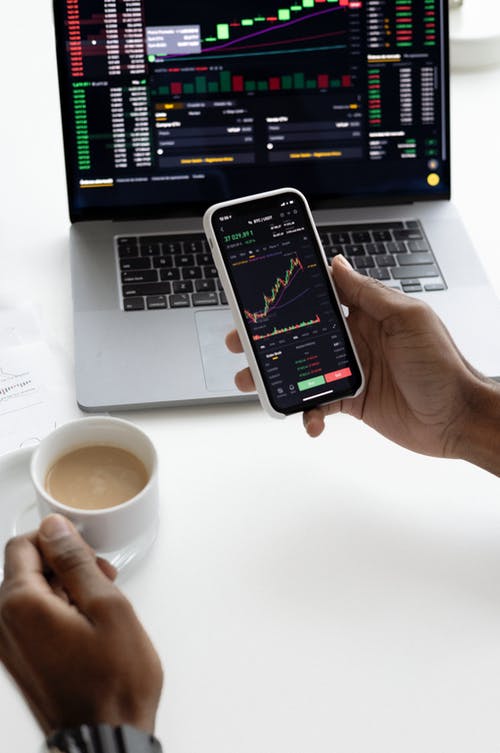Trading dates back to the pre-historic times where people exchanged goods and services in a gift economy before the innovation of the modern currency. Evidence of currency trading appeared in ancient Egypt around 259 BC, and by the close of the middle ages, currencies were already being traded through the early generation of international banks. This blog post talks about Understanding your brain function for successful trading.
Whether stock, forex or otherwise, trading is the backbone of our economic mainstay, and we are all involved whether you know it or not.
However, you require many skills to trade in the financial markets successfully. These include the unique abilities to assess a company’s fundamentals to find grounds to tell the direction of a stock’s trend.
But, important as these technical skills are, the more critical element is the trader’s mindset.
Maintaining discipline, checking emotions, and strategic thinking are the key components of what may rightly be called trading psychology.
The trader’s mindset
Conclusive research and studies have shown that a human brain is a single unit with the left and right hemispheres. These two spheres are critical whenever you are engaged in any activity that involves doubt, uncertainty and risk.
In trading, the two units most probably work to counter one another, all to your disadvantage.
Typically, both present uniquely different attributes to the trader’s mind where one is appreciated while the other is regarded with virtual indifference.
Apparently, in modern times, logic and reason, which comprise the left brain, is appreciated and celebrated, but the emotional and intuitive right hemisphere is ignored.
You must have heard statements like “stop being emotional “or “I think I got too emotional “or “keep emotions out of this”.
This attitude is mistaken because both hemispheres work interdependently to shape the overall trader’s perspective.
Read also: https://www.newsly.co.ke/what-are-the-7-greatest-mistakes-traders-make/
To make matters worse, schooling in modern trading is tailored to present logic and reason (the left hemisphere) as the only brain instrument to leverage in analysis and trade executions.
Tutors and mentors will categorically say things like, “remain level headed and think objectively…keep emotions out of the way.”
At this stage, the question we need answers for is, “is this trading paradigm or school of thought working?”.
Certainly not!
Some of the most experienced traders (recognized for their knowledge, logic and reasoning) are constantly executing trades from a mind ravaged by the emotions of fear or greed, which culminates in impulse trading, revenge trading or over-trading.
Clearly, there is a big problem that everyone is unwilling to confront and instead sweep it under the carpet.
Despite the relentless efforts to ignore the emotional impact on trading quality (refusing to recognize that both hemispheres are critical in trading), lack of emotional intelligence in one’s skillset keeps manifesting every time poor decisions are made.
Such poor decisions and failures in trading won’t go away until you understand your emotional nature. And learn how to factor it into your practice.
What do the left and right brain hemispheres mean to trading performance?
While you are looking at the charts and evaluating the action potential, your right and left brain hemispheres are at work whether you know it or not.
Naturally, though, your main focus is on the left brain, which represents you more proactively. But as mentioned earlier, your right brain is equally active at any level of engagement.
When a trader is relaxed, calm and patient, it is easy to imagine that their emotional component is mute and inactive.
However, most of the time, the right hemisphere (emotional mind) is actively scanning for emerging threats and opportunities below your levels of awareness.
A threat could be a clear signal alerting the trader that a setup is forming.
And, yes! 95 % of your trading decisions are processed below this threshold of awareness, only that you overlook the intuitive process.
Of course, the emotional (right hemisphere) is not wired to think like its logical counterpart. Therefore, the course of your decision making is accustomed to assuming that it is not around. Yet, it actively does its job in the background as it complements the logical/reasoning mind accordingly.
The emotional and logical minds are like the two sides of a coin or, better still, co-joined twins sharing a heart. An absence or malfunction of one hemisphere can amount to a severe flaw in one’s mental performance.
The integrated or combined Trading Mind
A close examination of the left and right hemispheres of the brain makes it hard for anyone to believe that traders always seek to utilize half their brains.
The right hemisphere is quite extensive. Actually, it is half the brain’s size, yet most people tend to ignore its massive influence in times of trading anxiety.
It is no wonder that most traders who subscribe to this school of thought end up in a pool of failure.
Naturally, though, both brain hemispheres are integrated into one functioning unit by a communications network called the (corpus colosseum)
This integration confirms that both hemispheres have to coordinate to prepare the brain for trading.
The emotional brain evolved way earlier than the logical brain, and it was built with a tendency to control or manage outcomes in short term survival situations. But then you realize that this is a big challenge because, in trading, you have to forsake the illusion of control to succeed.
Even when proven wrong, the emotional brain agitates to remain correct, and it goes on to predict outcomes. Apparently, every time you sit before your computers to trade, you trigger these inbuilt biases instinctively.
This is why emotional intelligence is crucial for any trader aspiring to build a mind to manage uncertainty.
You must learn to manage your emotional brain function and use it effectively to develop a mind that trades strategically. Otherwise, you will continue being sabotaged by the weaknesses of the right hemisphere’s limbic brain.
The limbic brain leans towards controlling the outcome, yet it cannot distinguish between a biological threat and psychological stress. It is primarily designed to trigger the fight or flight response from the Sympathetic Nervous System.
Therefore, if it is put under pressure without any training, you are likely to run into issues like
- Trade entry problems
- Impulsive trades
- Taking premature profits
- Overconfidence, which may disappoint
- Crumbling down when a trade goes against you
To succeed in trading, your emotional brain must trust the thinking brain. Trust that your thinking brain will understand how to leverage emotion to develop an overall mind that works for successful trading.






